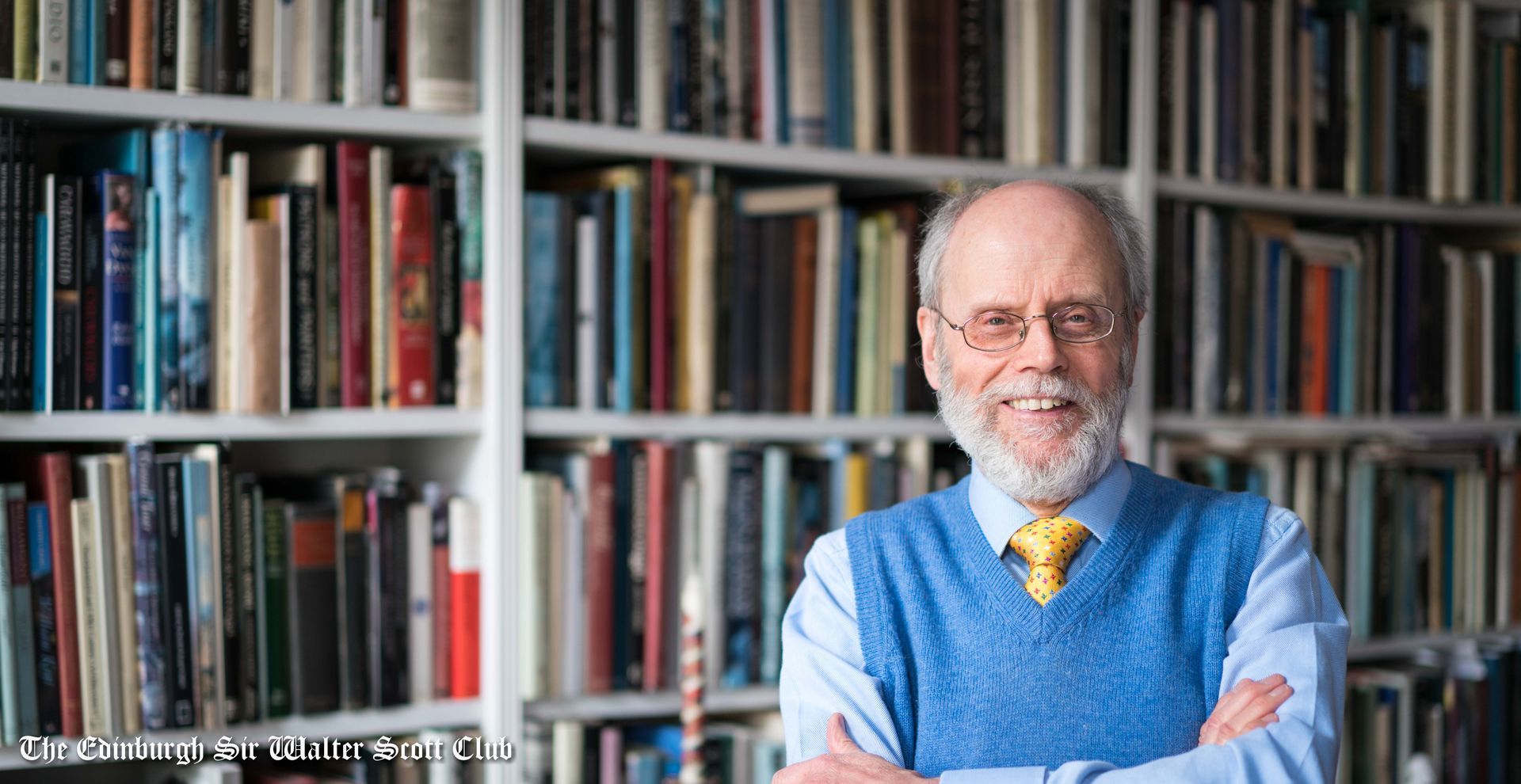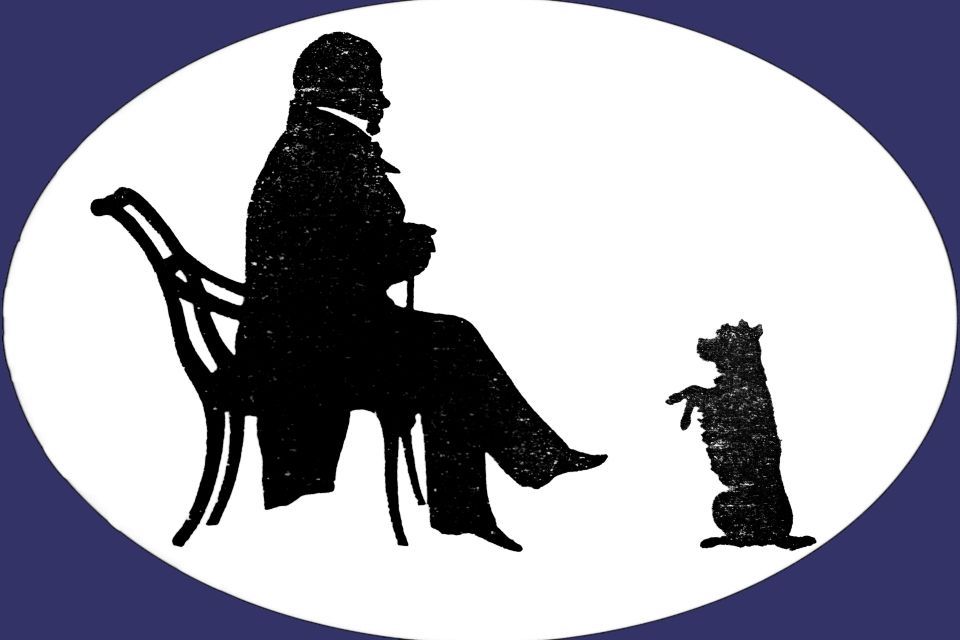2009
Our President in 2009/10 was:
Dr Iain Gordon Brown
He proposed the Toast to Sir Walter at our 101st Annual Dinner on Friday 12th March 2010 in The New Club, Edinburgh
Download the [transcript] or read the [bulletin]
Summary of the Speech:
His speech, titled "Consigned with Indifference to the Chance of an Auction", focused on the history and significance of Sir Walter Scott’s writing cabinet, which Brown had personally acquired and preserved.
1. The Writing Cabinet as a Relic of Scott’s Life
- The speech centered on a mahogany Georgian writing cabinet that originally belonged to Scott’s father before being passed down to Sir Walter.
- It played a part in Scott’s professional and personal life, holding financial papers and possibly even manuscripts.
- During Scott’s financial ruin in 1826, he gifted the cabinet to his lawyer, John Gibson, rather than allowing it to be sold at auction with his other possessions.
- The cabinet passed through various owners before being acquired by Brown in 2005.
2. The Cabinet as a Symbol of Scott’s Character
- Brown saw the writing cabinet as a metaphor for Scott himself—practical, unassuming, and a silent witness to his struggles and triumphs.
- Scott's financial troubles, caused largely by the collapse of his publishing ventures, were detailed through his self-imposed debt repayment efforts.
- The phrase "My own right hand shall do it!", which Scott often used to express his determination, resonated with Brown as he examined the cabinet’s history.
3. Scott’s Integrity and Financial Struggles
- In 1826, Scott refused bankruptcy and instead committed himself to repaying his enormous debts through relentless literary work.
- He instructed his solicitor, John Gibson, to sell his possessions openly as his own, believing that collectors might pay more for items associated with him.
- The cabinet contained receipts from over twenty years, symbolizing Scott’s complex financial dealings and relentless work ethic.
4. The Auction and Modern Neglect of Scott’s Legacy
- Brown lamented the lack of institutional interest in acquiring Scott’s cabinet when it was auctioned in 2005.
- He criticized how modern society values celebrity over substance, contrasting Scott’s immense literary contributions with today’s obsession with ephemeral fame.
- He speculated that had the sale involved a café table used by J.K. Rowling, it would have fetched a far greater price.
5. The Writing Cabinet’s Journey and Its Future
- The cabinet was temporarily housed at Abbotsford for a BBC Antiques Roadshow feature.
- Brown considered donating it to a suitable public institution, such as a potential Walter Scott Study Centre in Edinburgh, should one be established.
Interesting Points Worth Mentioning:
- Scott’s Deep Financial Awareness: Unlike many authors, Scott was acutely aware of the commercial value of his work and possessions, even as he struggled with debt.
- John Gibson’s Role: His lawyer, John Gibson, played a pivotal role in handling Scott’s financial affairs and preserving key relics, including the cabinet.
- Scott’s Handwriting Issues: Even Brown, an expert in literary manuscripts, admitted that deciphering Scott’s handwriting was often a challenge!
- The Emotional Weight of Literary Relics: Brown reflected on how owning a physical object linked to Scott created a unique, intimate connection with the author.
- Criticism of Modern Cultural Priorities: Brown noted the irony that while Scott was once the most famous author in the world, his legacy is now often overlooked in favour of contemporary trends.
Conclusion:
Dr. Iain Gordon Brown’s speech was a deeply personal and scholarly reflection on Scott’s life, financial struggles, and enduring legacy. By tracing the history of Scott’s writing cabinet, he brought attention to the neglect of Scott’s material heritage and the modern world’s shifting values. His passion for preserving Scott’s memory was evident throughout, making this toast a fitting tribute to one of Scotland’s greatest literary figures.
Download the [transcript] or read the [bulletin]

Dr Iain Gordon Brown FSA FRSE was, until his retirement in 2011, Principal Curator of Manuscripts in the National Library of Scotland where he was responsible for (among other areas of the collections) material relating to Sir Walter Scott and his world. Over the course of a long career he made numerous important acquisitions for the nation in this and other fields, and mounted many exhibitions and displays. He is the historian of the National Library and its collections, having written Building for Books: The Architectural Evolution of the Advocates’ Library (1989) and Rax Me That Buik: Highlights from the Collections of the National Library of Scotland (2010), as well as numerous articles and essays on its history and development.
Iain is now an Honorary Fellow of the National Library and an Associate of the Centre for the History of the Book in the University of Edinburgh. In 2014 he was appointed Consultant to the Adam Drawings Project at Sir John Soane’s Museum, London. Between 2012 and 2017 he held the office of Curator of the Royal Society of Edinburgh. Having been President of the Old Edinburgh Club, 2007-10, and a Trustee of the Edinburgh World Heritage Trust, 2011-14, he currently serves as Vice-President of the Edinburgh Decorative and Fine Arts Society; as a Trustee of the Penicuik House Preservation Trust; and as a member of the Faculty of Advocates Joint Abbotsford Advisory Committee and of the Curatorial Expert Advisory Panel for the Abbotsford Trust.
Born in Durban, South Africa (to a Chartered Accountant father and a mother who had read English at the University of Edinburgh under teachers such as the Scott scholar Arthur Melville Clark), Iain was educated at George Watson’s College, where he studied Classics, and at the University of Edinburgh where he read History. He took a PhD at St John’s College, Cambridge, his thesis being on the virtuoso Sir John Clerk of Penicuik and the world of eighteenth-century antiquarianism and cultural patronage. This has resulted in a large number of publications ranging from articles in learned journals to book chapters and short monographs.
In the realm of Scott studies, Iain has edited Scott’s Interleaved Waverley Novels: an Introduction and Commentary (1987) and Abbotsford and Sir Walter Scott: The Image and the Influence (2003). He has written some important articles on aspects of Scott collecting, and on Scott portraiture. His Frolics in the Face of Europe: Walter Scott, Continental Travel and the Tradition of the Grand Tour – a work combining two major scholarly interests – appeared in 2020.
In other fields he has published extremely widely, much of his scholarly work being on topics connected with British art and architecture of the eighteenth century; on antiquarianism, taste and the Grand Tour; and on the literature and culture of Scotland in the age of the Enlightenment. Books include The Hobby-Horsical Antiquary; Poet & Painter: Allan Ramsay, Father and Son 1684-1784; Monumental Reputation: Robert Adam and the Emperor’s Palace; The Todholes Aisle; Elegance and Entertainment in the New Town of Edinburgh; Witness to Rebellion (on the remarkable Jacobite drawings he discovered at Penicuik House); Allan Ramsay and the Search for Horace’s Villa. In 2017 the second, greatly expanded edition of his now-standard edition of David Hume’s autobiography, My Own Life, was published by the Royal Society of Edinburgh. He has contributed to major works of collaborative scholarship such as the Aberdeen History of Scottish Literature; the Edinburgh History of the Book in Scotland, The Grove Dictionary of Art, The International Dictionary of Library Histories and the Oxford Dictionary of National Biography.
In 1985 Iain was elected a Fellow of the Society of Antiquaries of London. In 1997 he was elected a Fellow of the Royal Society of Edinburgh, Scotland’s national academy.
Iain is married to Dr Patricia Andrew FSA, a well-known lecturer on art-historical subjects and also an historian of the Grand Tour and the British in Italy.
You may also like:
Iain was on the Council of the Club from 1989-1993 and has also given 4 lectures to the Club:
2022: Dr Iain Gordon Brown - The Greek Blockhead: Sir Walter Scott, Greek, Greece and the Greeks [video] > [transcript]
2021: Dr Iain Gordon Brown - Frolics in the Face of Europe: Sir Walter Scott, Continental Travel and the Tradition of the Grand Tour [video] > [transcript]
2003: Dr. Iain Gordon Brown – Sir Walter Scott: A Life in Manuscripts [bulletin]
2000: Dr. Iain Gordon Brown - Collecting Scott for Scotland 1850-2000 [bulletin]
1997: Iain replied to the Toast to the National Library of Scotland at our 88th Annual Dinner [bulletin]
(audio below)


